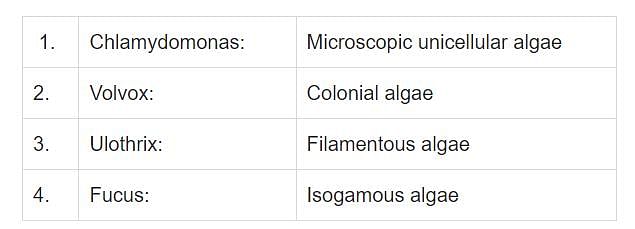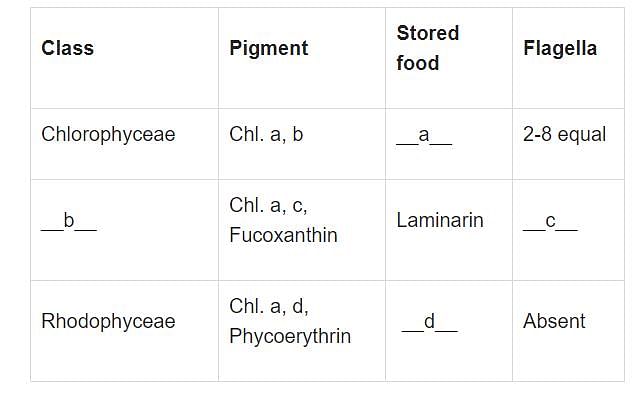Test: Algae - NEET MCQ
25 Questions MCQ Test Biology Class 11 - Test: Algae
Plants which are not differentiated into roots, stem and leaves are grouped under
The storage bodies present in chloroplasts of chlorophyceae are called as ________
Which of the following is rich in protein used as food supplement by space travellers?
Asexual reproduction is by the production of different types of spores. Out of that most common is
Which class of algae is known for producing hydrocolloids such as algin and carrageen, which are used commercially?
Consider the following statements regarding brown algae:
I. The pigments are chlorophyll a, c, and xanthophylls, including fucoxanthin.
II. Storage food is laminarin and mannitol.
III. The cellulosic cell wall is covered with algin.
IV. They do not have a centrally located vacuole.
V. Their photosynthetic organs are called fronds, which are leaf-like structures.
VI. They have pear-shaped biflagellate zoospores.
VII. They have two unequal laterally attached flagella.
The number of correct statements is:
What is the primary pigment responsible for the red color in most red algae?
What type of reproduction typically occurs in green algae such as Ulothrix and Spirogyra?
Fusion between one large, nonmotile (static) female gamete and a smaller, motile male gamete is termed as
Sexual reproduction by non-flagellated but similar-sized gametes is seen in:
Which of the following is an example of anisogamous reproduction in algae?
|
180 videos|362 docs|148 tests
|




















